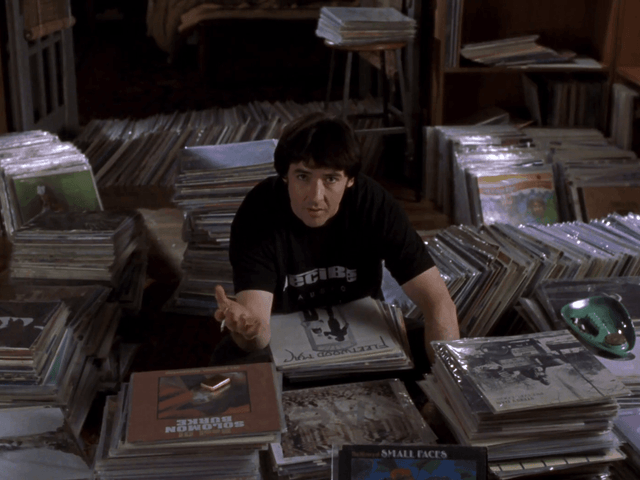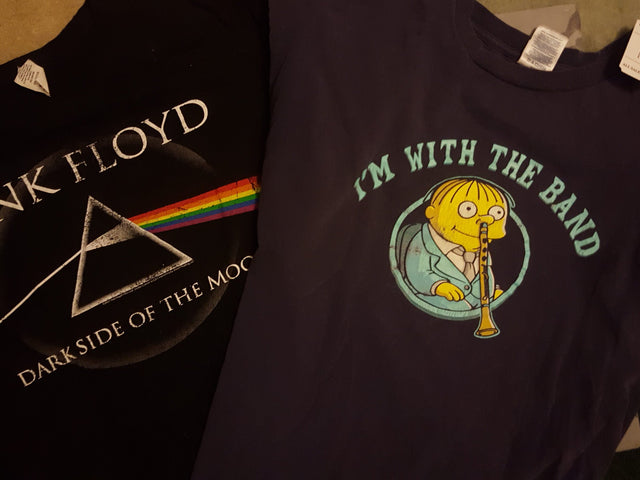How To Create Collaged Record Dividers
Get Creative And Mark The Place In Your Record Collection Where "R" Ends And "S" Begins in Style.
Alright, you’ve followed through on that New Year’s resolution and finally got that record collection perfectly alphabetized. It’s time to slide in some record dividers so you know where R ends and S begins. Sure, if you’re handy enough, you could follow this tutorial for DIY wooden dividers, but you may not be all that handy (me), and you don’t have a saw and honestly don’t think you’re responsible enough to own one (also me). If you’ve got anywhere from $100-$350 dollars to spare, you could score a set of aesthetically pleasing dividers on sites like Etsy, but wouldn’t you rather spend that cash on more records? If you’re looking for a route that’s a whole lot cheaper, simpler and that allows you way more creative freedom, here’s a tutorial for making collaged plastic record dividers.
Collage is a thriving medium with loads of interesting history. Often associated with Dadaism and Surrealism, it’s been reinvented and taken to wild heights in the age of the internet and Photoshop. While producing some really visually interesting results, it's the perfect way interact with, meld, manipulate and recontextualize cultural artifacts into a visual concept of your own. And why not have your visual ideas reside amongst your most beloved possession: your record collection.
Tip: Before you start, don’t be afraid to flip through the work of some collage artists. If you need inspiration, I love the work of collage artists Jesse Treece, Nancy Spero, Hannah Höch, Linder Sterling, Kara Walker, Julien Pacaud and many more.
 Materials you'll need.
Materials you'll need.
You’ll need:
Plastic record dividers (available on Amazon for around $15-$25 dollars)
Collaging materials
A fine-tipped Sharpie
An assortment of paper
Glue (I used Elmer’s, but I’d really recommend something a bit stronger or more suitable for plastic surfaces. Now that everything is all dried, it's looking like I have to do some re-gluing.)
Scissors
Ruler
Letter stamps or stencils
Acrylic paint and a paintbrush
(Optional) Modge Podge
Collecting the collaging materials is arguable the most fun part of this whole thing. These could include old Cosmopolitan magazines, adhesive gem stones, your own drawings, odd secondhand zines, postcards and children’s books. I would recommend saving everything and scouring Goodwill and secondhand bookstores. The materials from which you cut are really the aesthetic basis of your dividers and what makes your project unique.
 My collaging material ranged from magazines to field guides to sticky gemstones to a '30s graphic novel I found at a used bookstore.
My collaging material ranged from magazines to field guides to sticky gemstones to a '30s graphic novel I found at a used bookstore.
To start, measure 2.5 inches in from the outside end of your divider and make two marks at the tip and bottom. Use a straightedge to connect the two marks.
 2.5 inches.
2.5 inches.
Choose a background paper for your collage. This could be a solid color, photograph, illustration or pattern. Plan accordingly to coordinate with the other cutouts or embellishments that you want on this divider, and be sure to account the fact that the letter needs to show up so really busy patterns may not be ideal.
Line up the side of your background with the line you just made on the divider and trace it.
 The margins of one of my magazines was a really pleasing baby blue color, so I traced onto that.
The margins of one of my magazines was a really pleasing baby blue color, so I traced onto that.
Cut out your background, and decide what other pieces you’d like to be in your collage. Cut out possibilities and place them on the background until you find something you’re happy with, and don’t forget to account for space for the letter. This part so fun; it's like a puzzel that has no right answer!
Once you find a layout you like, glue all the pieces down, obviously starting with the background and working your way up.
 All glued down!
All glued down!
**Important step!!! ** Place something flat and heavy (I’d recommend a stack of books) on top of the divider right after you glue everything so it doesn’t warp as it dries. Leave it there for at least 20 mins. You can repeat the previous steps to start your next divider while you’re waiting for this one to dry.
 Glad I finally found a use for those expensive textbooks. Ha.
Glad I finally found a use for those expensive textbooks. Ha.
Once your divider is dry, remove the books, place the letter stencil on the desired area (I put all my letters in the bottom outside corner), and stipple paint into the stencil.
You can also stamp the letter on or use stickers. Or, use a printer or label maker to print out genres, or any other preferred method of organization. Remove the stencil, let your letter dry and you’ve done it!
 This pale pink acrylic paint stenciled onto my divider on reeeeaaal nice.
This pale pink acrylic paint stenciled onto my divider on reeeeaaal nice.
**Optional: ** If you want more of a traditional collage-y finish, you can use Modge Podge over top of the collage after the letter paint dries. It comes in different textures like glossy and matte. Just be careful to use a relatively thin coat. Because the Modge Podge goes on top of the divider, you can’t weight it down while it’s drying to prevent warping.
 Yay! All done! I added a little bit of gold paint around the edges of some of the pieces in my collage.
Yay! All done! I added a little bit of gold paint around the edges of some of the pieces in my collage.
Repeat these steps for the entire alphabet, all of your genres, or using some vague symbols of record organization that you made up to keep burglars from easily ransacking your collection. There you go! You’ve got yourself your own unique record dividers that would probably make Hannah Höch herself say “Oh my god, those are really neat record dividers!” from the grave.
 Nice.
Nice.
 Neat.
Neat.
Amileah Sutliff is a New York-based writer, editor and creative producer and an editor of the book The Best Record Stores in the United States.
Join the Club!
Join Now, Starting at $44Exclusive 15% Off for Teachers, Students, Military members, Healthcare professionals & First Responders - Get Verified!






